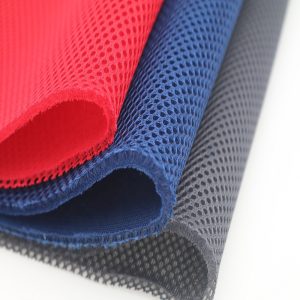The popularization of printed clothing made sandwich fabric very popular. This is due to its ability to retain color, durability and long service life. The birthplace of the material is the United States of America. It was here that new material was developed in the fifties of the twentieth century. The reason for the development was the development of the advertising sector. During this period, advertisers began to actively use posters, banners and flags. Today the fabric is produced in Russia and China.
Sandwich fabric - what is it, composition, manufacturing principle
Sandwich belongs to the class of knitted materials. The relatively new material owes its name to its structural features. It consists of two layers. The inner layer is made of natural fibers, the outer side is made of artificial raw materials. Sandwich products are soft and smooth to the touch. They lend themselves perfectly to draping. The canvas stretches to the sides, but not too much. The outer side is made of artificial fibers and is resistant to digital printing and minor mechanical damage.It's quite durable. Ideal for printing. The pattern lasts a long time, does not peel off or fade after washing.

A sandwich is a combination of polyester and cotton in equal proportions. Special knitting machines are used to make synthetic and natural fabrics. Using a special technique, they intertwine threads of polyester with cotton, forming a solid, knitted material. The reverse side is cotton, the outer part is synthetic. After the production process is completed, the canvas is sent for bleaching or dyeing.
Sandwich knitwear - advantages and disadvantages
The composition of the material allows it to be used in various fields - in light industry, design, and advertising. Main advantages of the canvas:
- The cost is quite affordable compared to other materials;
- The composition harmoniously combines synthetic and natural fibers;
- Wear resistance, durability;
- The fabric is strong and elastic, while it has good elasticity;
- Does not cause allergic reactions, therefore it is perfect for sewing children's clothing;
- Sandwich products are highly breathable and absorb moisture;
- The material is non-toxic and safe for health;
- Pleasant, soft to the touch material;
- Can be used for sewing almost any clothing;
- Practical fabric, retains color well.
One of the disadvantages is the difficulty of working with the canvas. In addition, if you wash items at temperatures above forty degrees, they may shrink.

Where is sandwich fabric used?
Sandwich knitwear is used almost everywhere. A variety of clothing is made from it, including:
- Tracksuits, T-shirts;
- Leggings, tops, T-shirts;
- Clothes for children and teenagers;
- Leggings, dresses, tunics;
- Blouses, sweatshirts, hoodies;
- T-shirts, boxers, sweatshirts.
The material continues to be used in advertising. It creates banners of various sizes, flags, and posters. The fabric is suitable for sewing backpacks, bags, soft items.
Sandwich fabric - care instructions
Caring for the material is quite simple. It can easily be washed, does not fade, and does not fade in the sun. Products should be washed at a temperature of thirty to forty degrees. Can be washed by hand or machine washable. The optimal washing time in a machine is from an hour to an hour and a half. Avoid using products containing chlorine. For white fabric, you can use mild bleach.
Spinning is allowed at medium speed for no more than ten minutes. Items must be ironed from the inside out, without using steaming. It is not recommended to dry things in open sunlight.


 0
0





